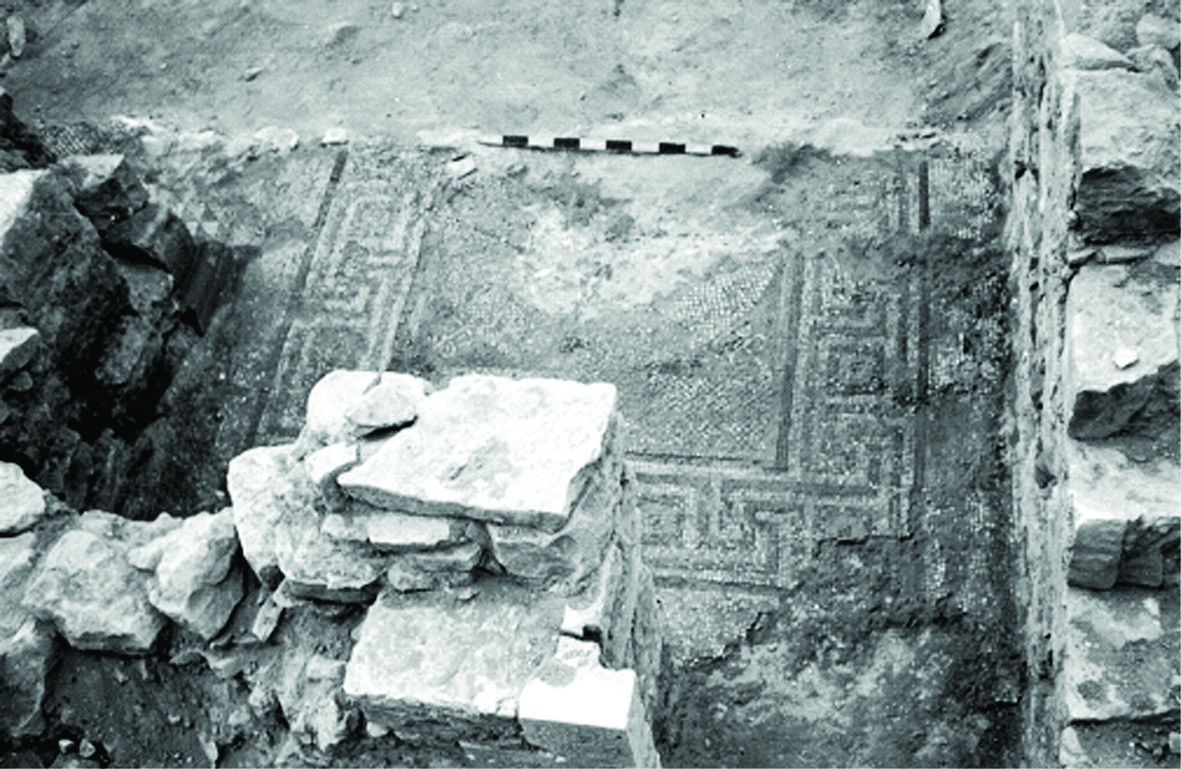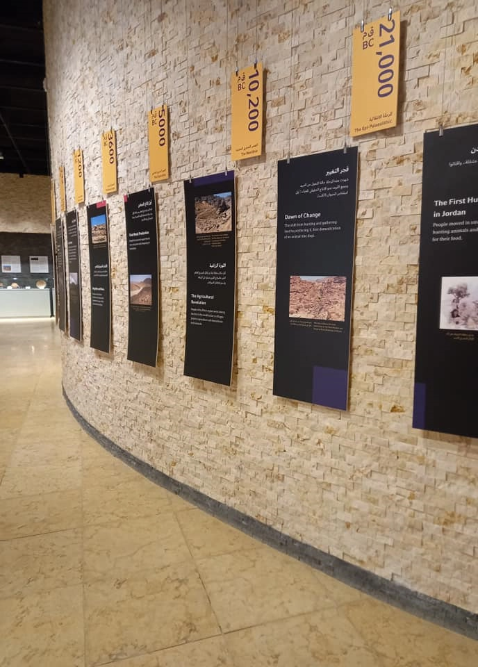Gallery 5: Nabataean Life
Not only rock-cut facade tombs but also dwelling of the Nabataean have been found in and around Raqmu (Petra). This exhibition sheds light on the Nabataean living space and lifestyle, mainly through artifacts from the Nabataean Villa in Wadi Musa and az-Zantur, and a reconstruction of a winter banquette hall (triclinium). The exhibition also focuses on the unique style Nabataean painted pottery, which is thought to have been used mainly for religious ceremonies, through the display of representative examples.
- The Nabataean Society
- Inside a Nabataean House
- The Distinctive Nabataean Pottery
Fragment of a Mosaic Floor

This mosaic floor, in black and white, relates to the oldest known mosaic floor in Jordan (dated to the 1st century BC, from Mukawir to the south of Madaba), which implies that the Nabataeans knew the art of mosaics at a relatively early period, although they did not use it extensively.
This mosaic floor must have adorned a rich villa. It was found during infrastructure construction work in Wadi Musa.
Gaia-Wadi Musa
Nabataean (early 1st century AD)
 For Audio Guidance, please Click here
For Audio Guidance, please Click here






